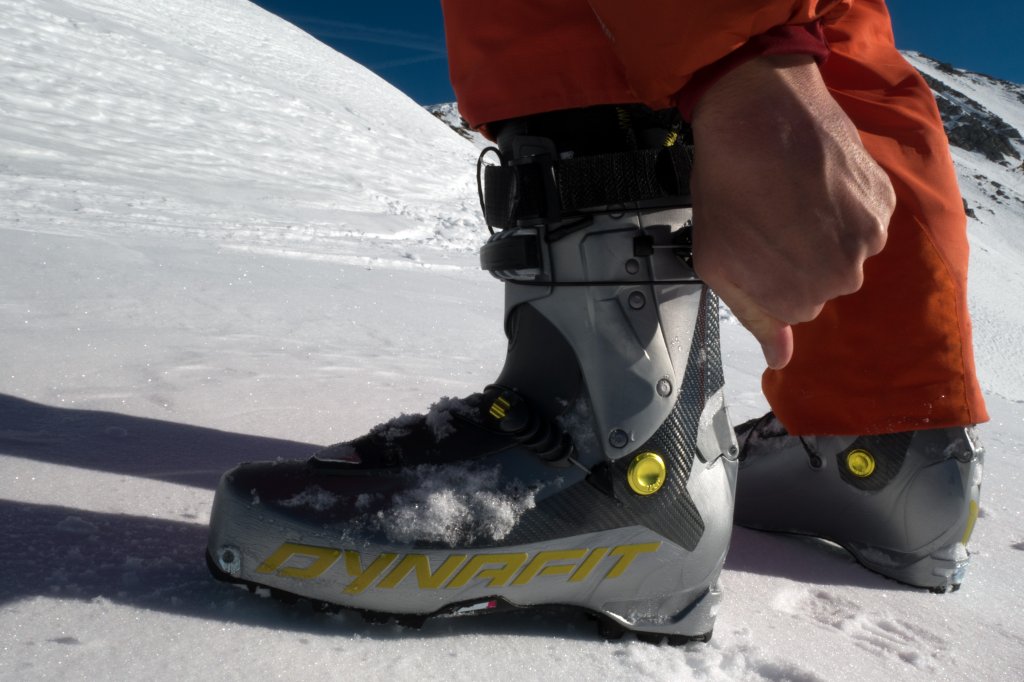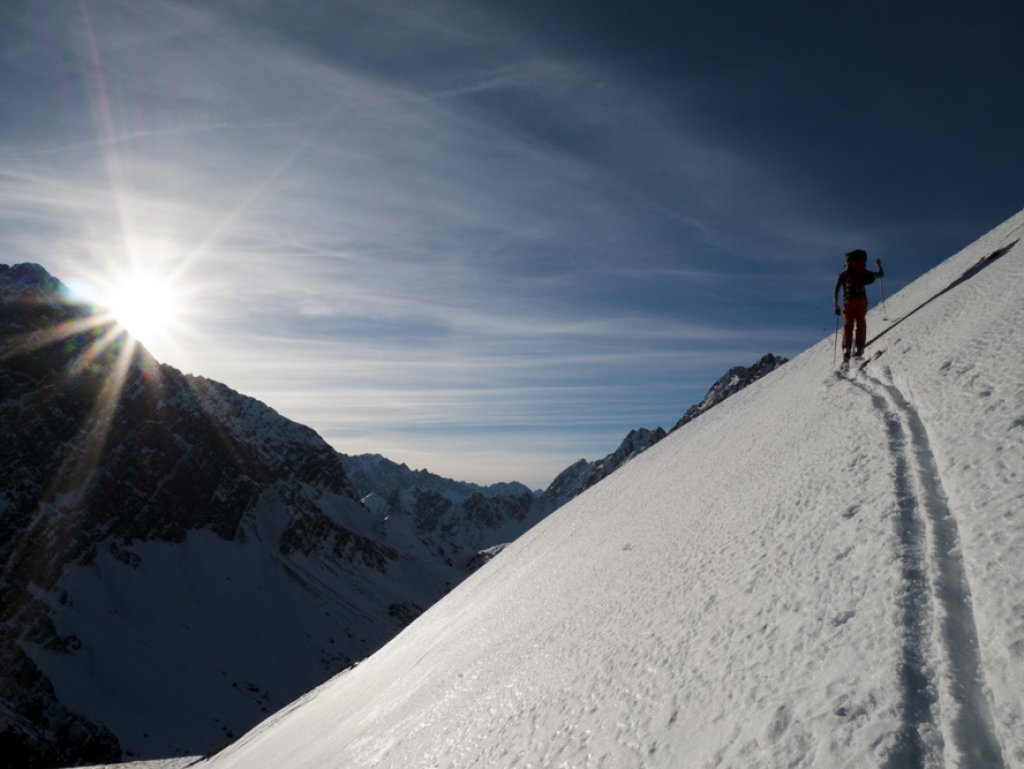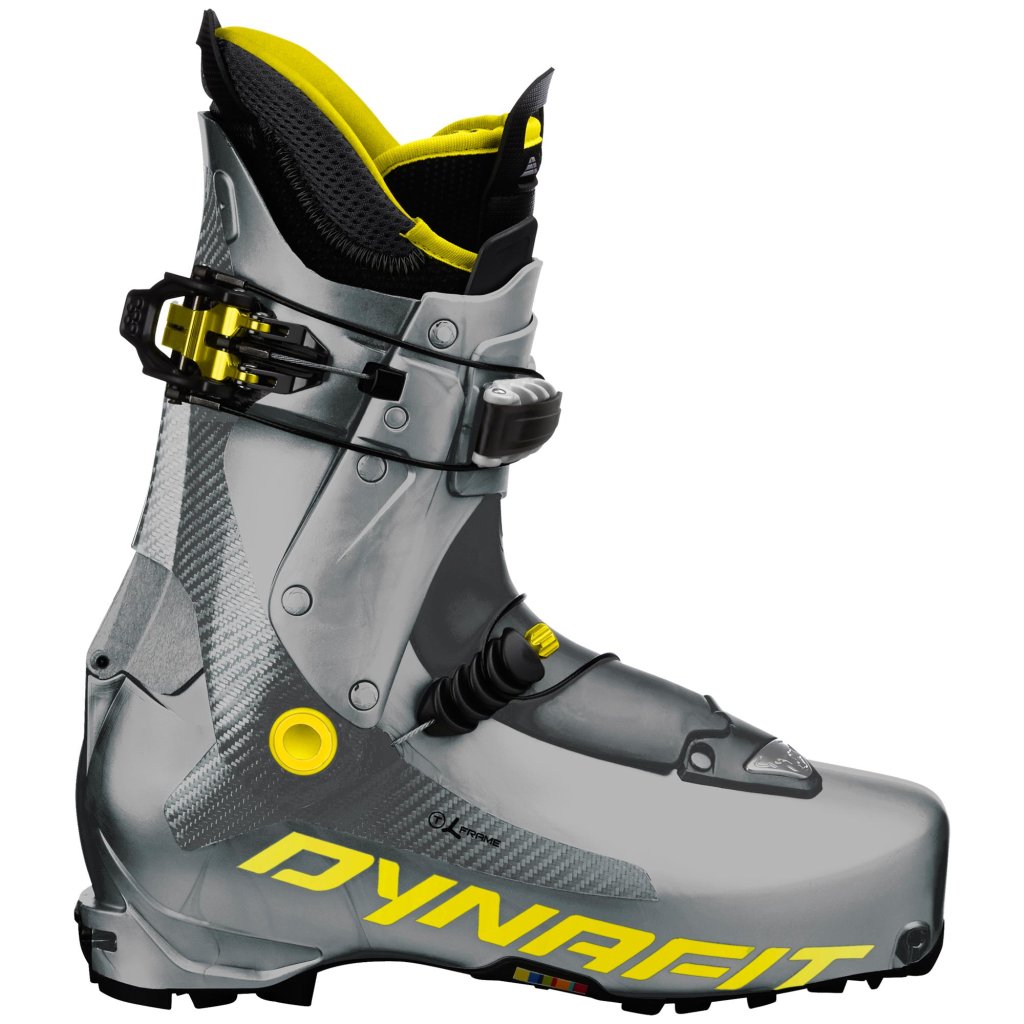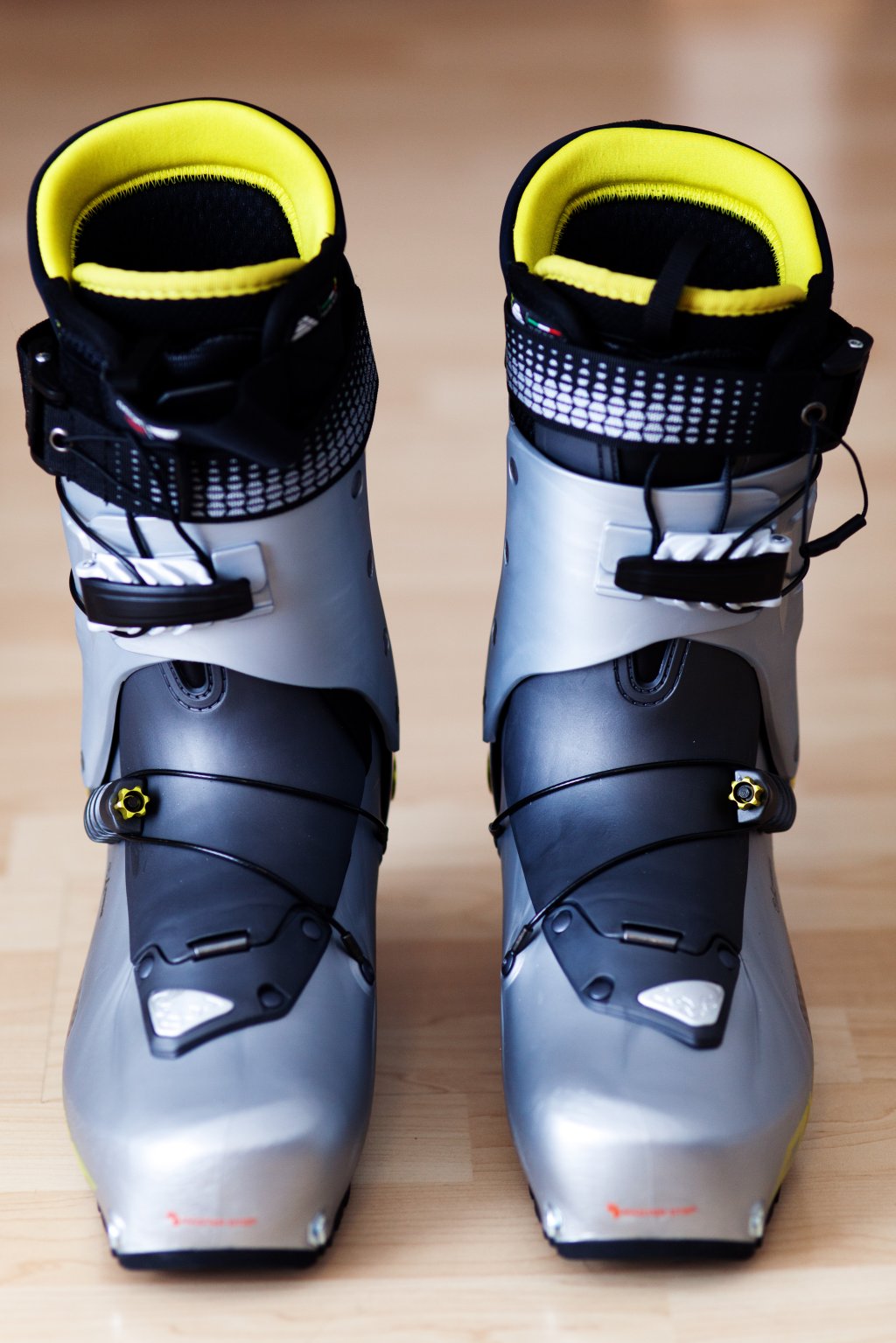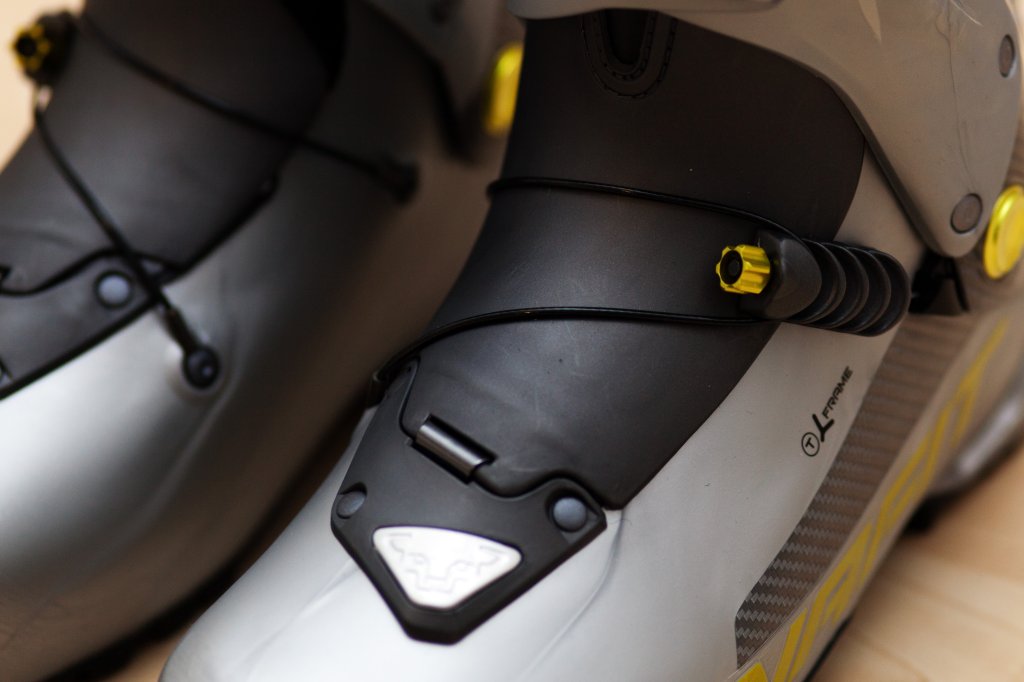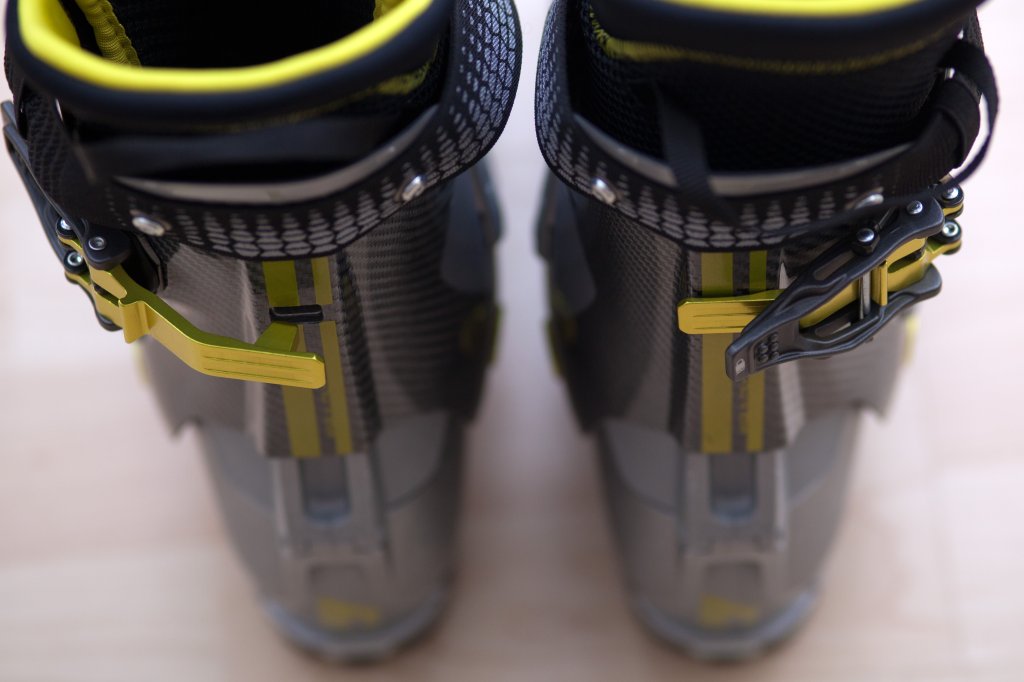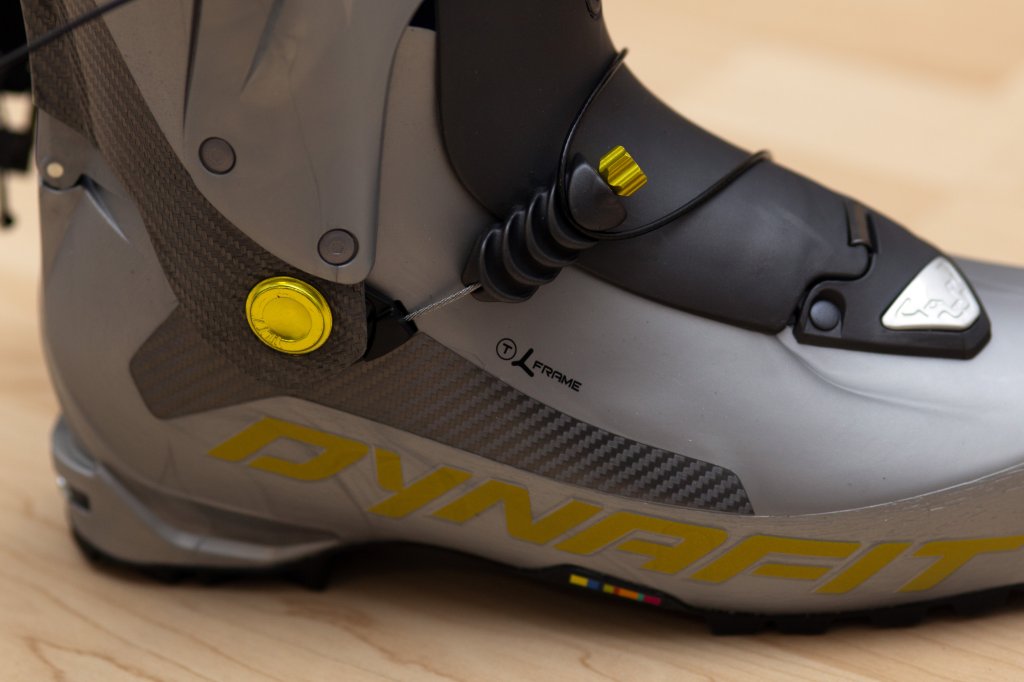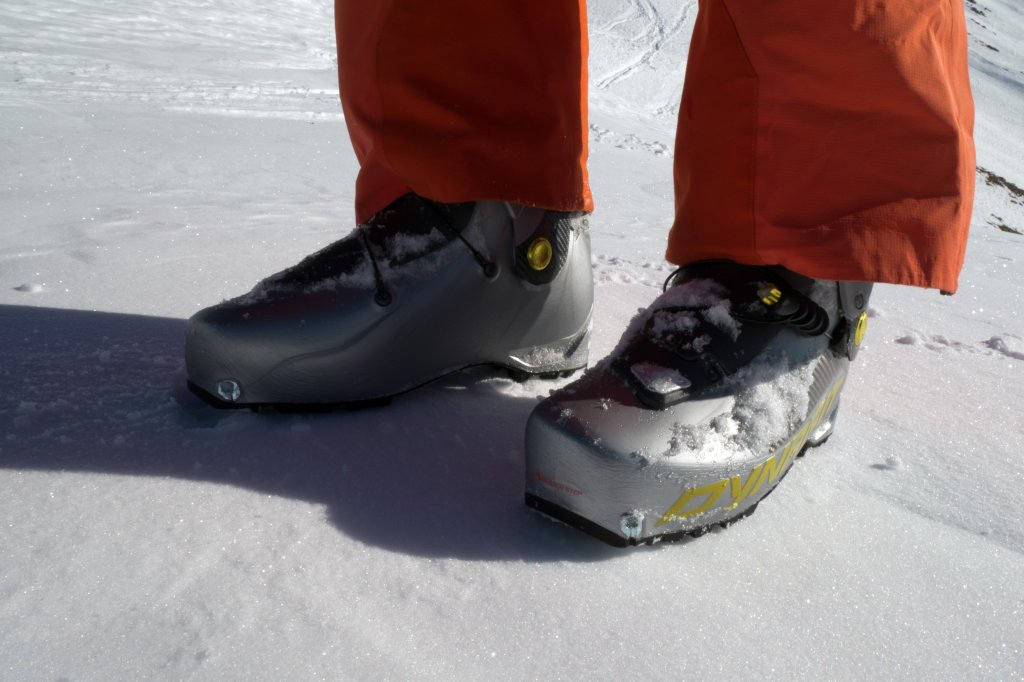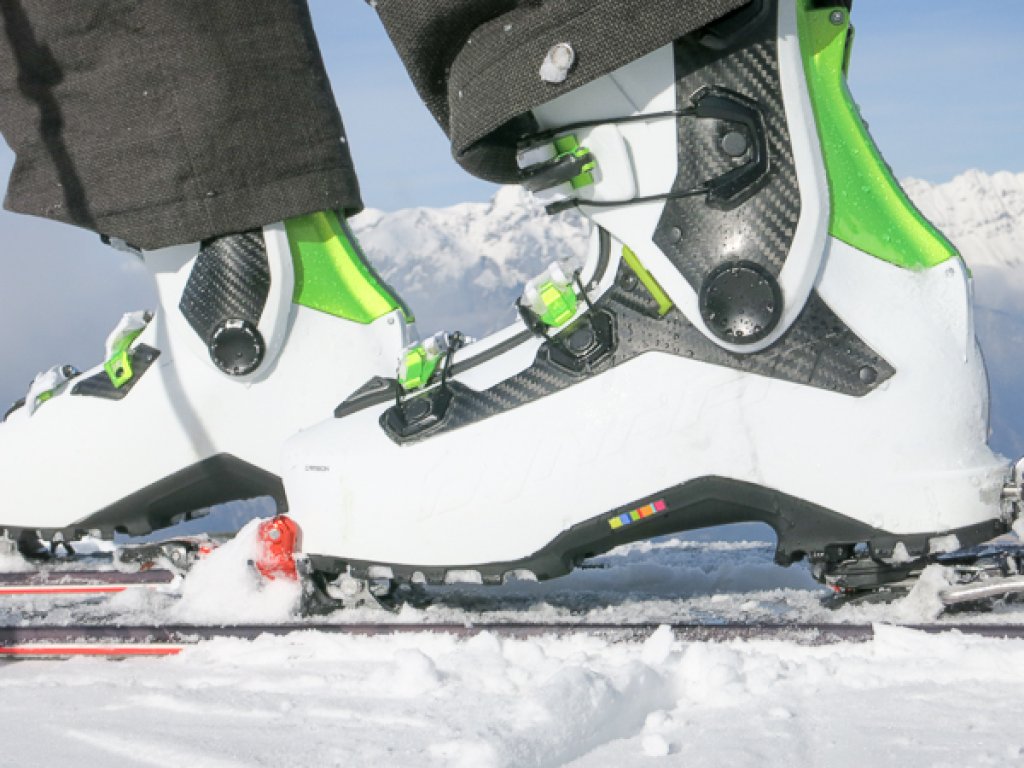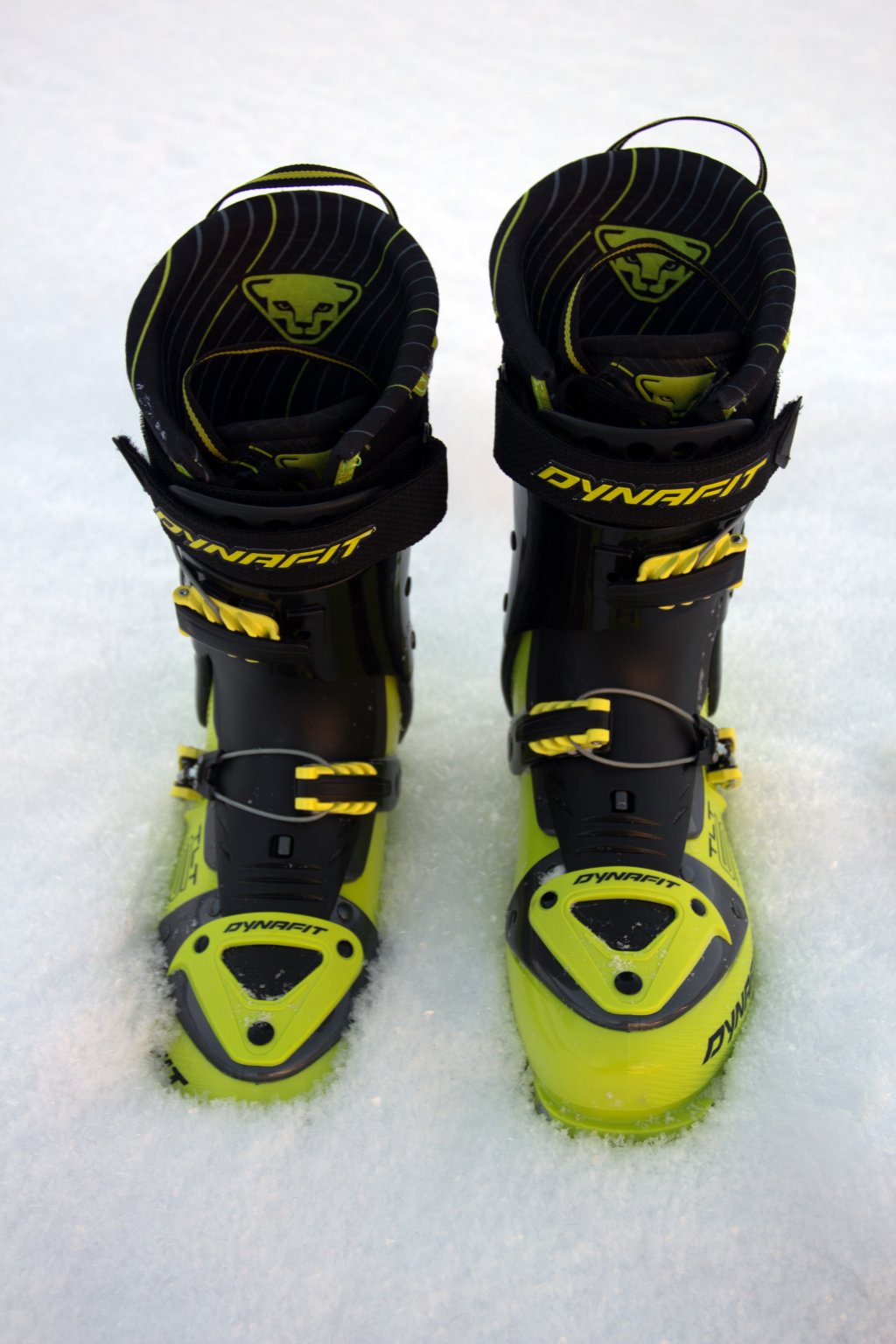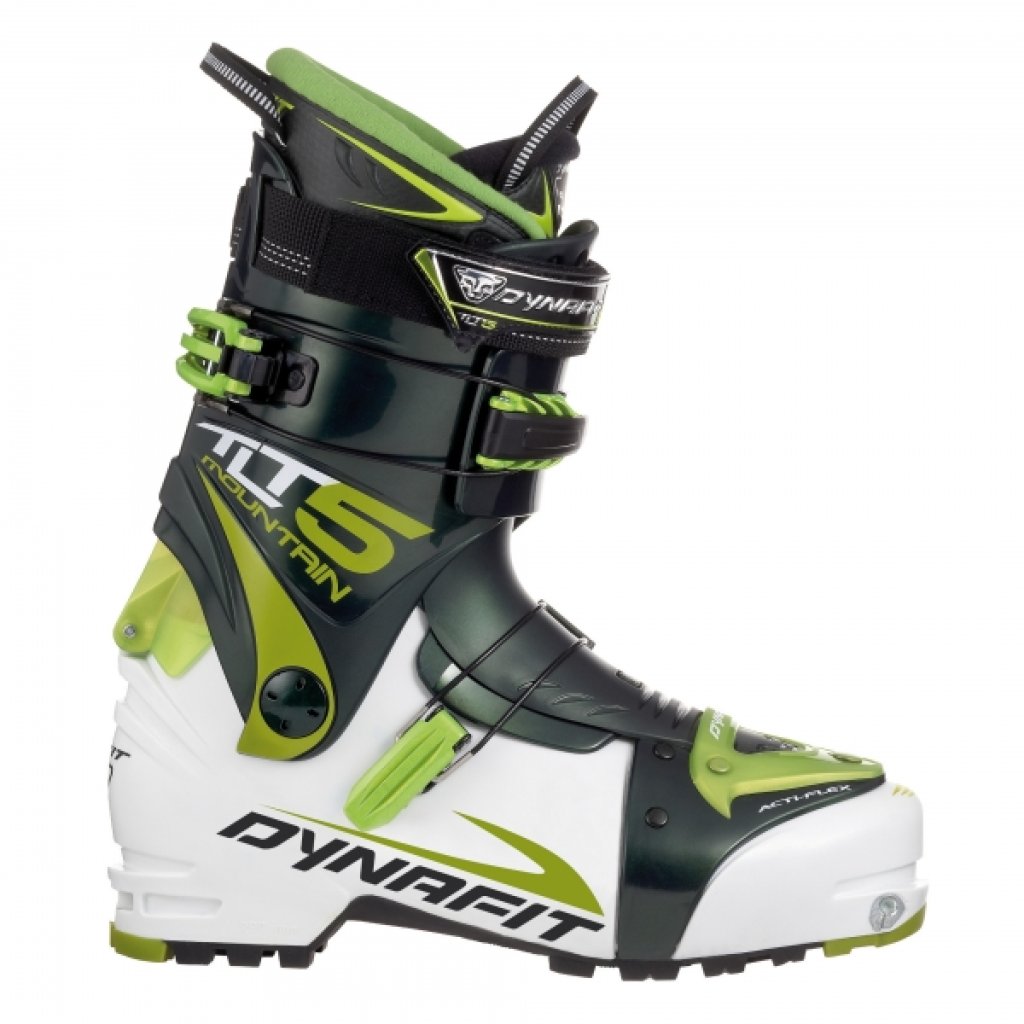First impression
While the TLT6 was more of a revision or optimization of its predecessor, the TLT5, the TLT7 is practically a completely new shoe. Therefore, although I have already used the TLT5 and TLT6 (and here or here), it still feels different and unfamiliar to me. This is mainly due to what Dynafit calls the "Speed-Nose", which is designed completely without a beak. Even compared to the previous models, this allows for a pivot point that is further back and therefore optimized. As with the TLT 5 and TLT 6, the TLT 7 cannot be used with frame bindings. Unfortunately, automatic crampons cannot be used with the TLT 7, which is quite common in ski touring. Another significant difference is the now fixed tongue. So that it doesn't get in the way on the ascent, it is much softer than the removable tongues of its predecessors. Together with the much more sparing use of carbon on the upper, this results in a less rigid shoe compared to the TLT6 Performance. I would describe the fit as somewhat more anatomical and probably more suitable for the masses.
The first thing you notice about the shoe is that there is only one double buckle at the top of the shaft. This also closes the boot at the bottom via a cable pull system and, as with the previous models, also controls the switch to walking or ski mode. There is also a strap, but this is designed with a clamp instead of a Velcro fastener. This means that the boot can be converted very quickly (2 hand movements) from ascent mode to descent mode (or vice versa).
The inner boot is rather thin and simple, for example it has no lacing, just a Velcro fastener. It is thermoformable, but due to the shoe's thinness, it doesn't do much. Of course, the TLT7 Performance also features the new Dynafit Master-Step In inserts, which make it even easier to get into the binding and, like the two predecessor models, the TLT7 is also available in a cheaper version with hardly any carbon. The TLT7 Expedition is similar in weight, but significantly softer than the TLT7 Performance.
